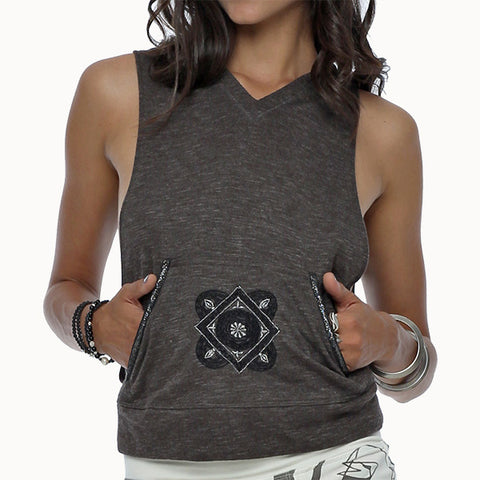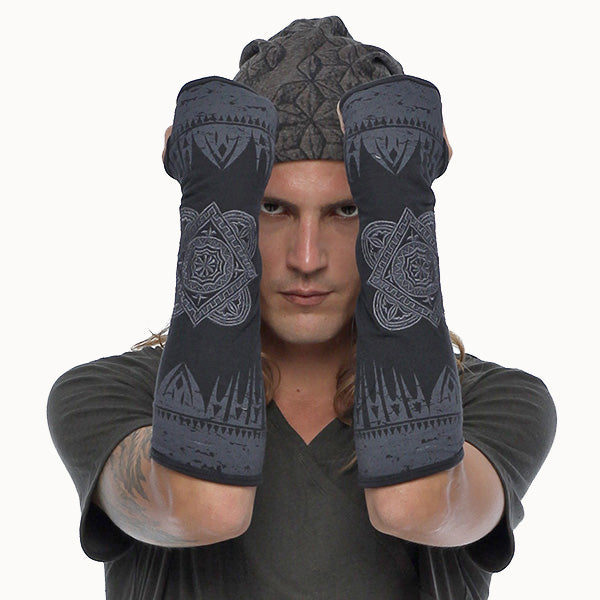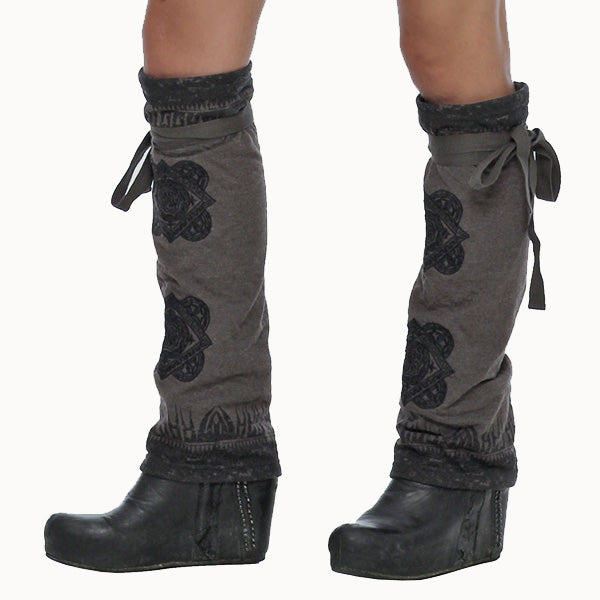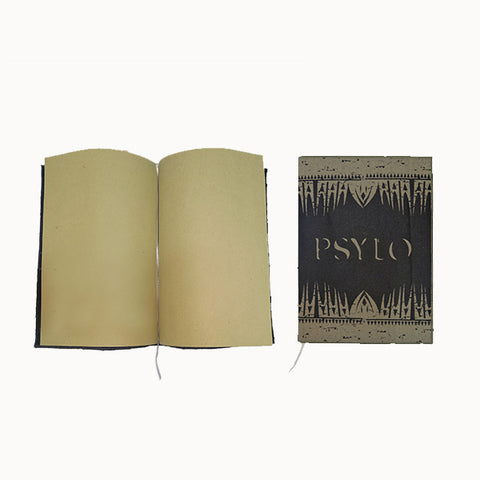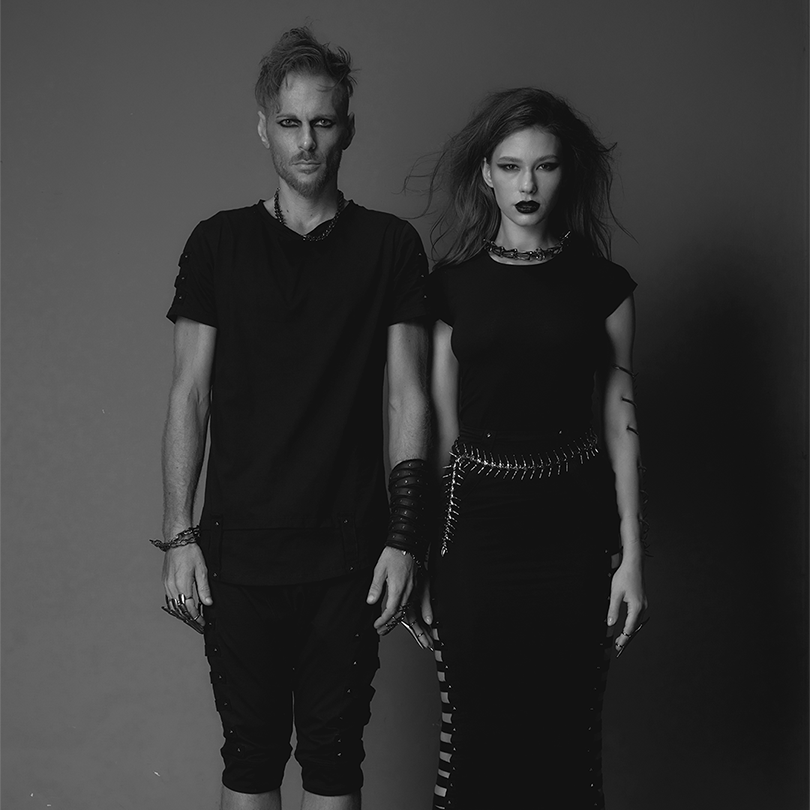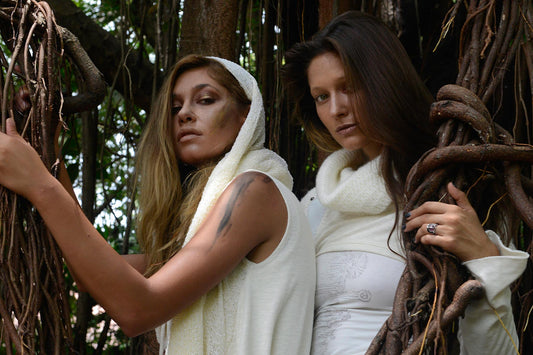Each Psylo clothing has many stories connected to it; from the way it’s made - which is fair and respectful to people and the environment alike. To the inspirations it carries through the design itself. You’ll find those cultural hints sometimes in the cut. Sometimes through the print artwork. Others in the style’s name. And at times - all of the above. Here we're going to share with you the story of the 'Jaya' line. It carries beautiful symbolism from several traditions, remixed into a secret message. Continue reading to discover the deeper meanings weaved into these Psylo styles...
Every Psylo piece of clothing is more than the stitched fabrics thrown together to meet the demands of trendsetters. It is the result of a deeply thought-of process of Alchemy, Ancient Art, Sacred Symbolism, Contemporary Art, Cultural History and the Essence of Humanity.
Whether in our street wear or festivals outfits, weaving deeper meanings into clothing became Psylo’s signature. Our designers love getting inspired by discovering ancient civilizations, or , even exploring alternative or future scenarios... above all - from appreciating the LIFE we live. That’s why Psylo’s 20th anniversary collection celebrates inspirations from our home - Bali. Named the ‘Island of The Gods’, it’s a place where different local religions and cultures have a long history of coexistence. Inspired by these themes from our home, Psylo’s designers created the ‘Jaya’ design. To celebrate this long tradition of peace.
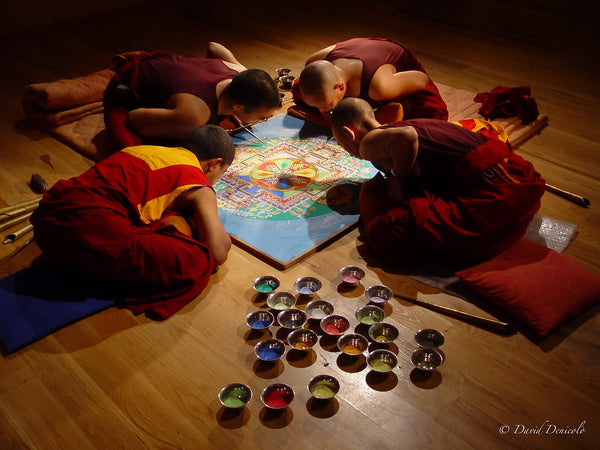
Image above: Tibet Monks creating a Mandala for Dalai Lama by David Denicolò
This design combines a central Mandala motif, inspired by Islamic art and sacred geometry, together with tribal patterns from Papua. The different motifs are united into one design to symbolise the Victory of Peace. Each element honouring its own tradition, while becoming greater as a whole. At the centre of our ‘Jaya’ artwork a Mandala is placed. It’s a geometric configuration of symbols, often found in Hindu or Buddhist art. Used as a map representing deities or paradises. Or as a cosmic diagram, symbolising the connection to the infinite and the world extending beyond and within minds and bodies.
To bring in another local tradition, a floral motif was used for the ‘Jaya’ Mandala design. Artists in the Islamic tradition often follow the concept of Aniconism. Believing that creating living beings, like humans, is God’s job and should be left out of artwork. Instead, themes from the natural world, and particularly plants - are central to this style. Plants appear in many different forms in Islamic art, ranging from single motifs to intricate patterns.

Image above: Islamic Architecture by Milad Alizadeh
The floral Mandala at the heart of our ‘Jaya’ is complemented with tribal patterns from Papua. Which also often refer to natural motifs. The Papuan tribal tattoo designs use particularly subjects like stars, flying birds and predatory creatures associated with movement. Some animals were chosen not only for their predatory skills, but also for their nocturnal ones. As being able to operate at night, symbolised the mastering the worlds of both light and darkness. Believed to protect from evil spirit,
“For the Papuans, this otherworldly existence was perceived in abstract reality as ‘Life’ on the supernatural plane of the living and the dead.” - Lars Krutak
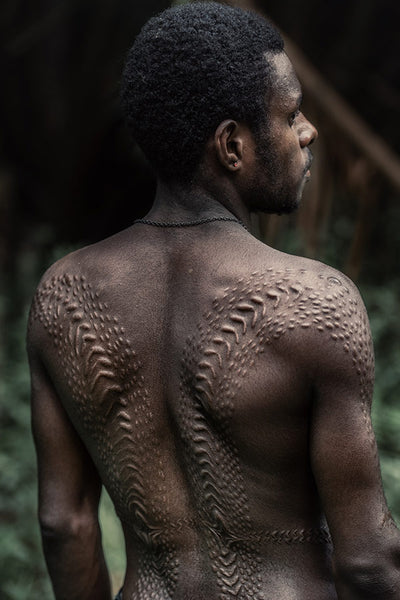
Image above: Crocodile scars by Trevor Cole
Bringing these elements together is taken further by naming the design ‘Jaya’ - a Sanskrit word meaning “victorious”. ‘Jaya’ also stands for the core portion of the Mahabharata, a major epic of ancient India. Indonesia’s capital name, Jakarta - comes from ‘Jayakarta’. Which means "victorious city". Naming this line ‘Jaya’ was to symbolise the victory of peace and coexistence. This design has been applied on selected styles for all you peaceful warriors to enjoy;
The Jaya Hoodie Top
In this feminine version of our “winning” top, the Mandala symbolism is accentuated with metallic embroidery. Comfortable, open-side cut with a hoodie and a big front pocket in street style. It’s made from our soft Slub fabric, which is double-knitted for extra coziness. Adorned with symbolism of coexistence, the Jaya Hoodie Singlet is perfect for your street wear champion look.
The Vishnu Hoodie Tee
‘Jaya-Kumari’ are the guardians of Vaikuntha - the celestial dwelling of the god Vishnu in Hindu mythology. Our streetwear Vishnu Hoodie Tee is printed with an illustration by street artist Evgeni BAM. Representing the god Vishnu, in a tribal-contemporary expression. Wearable art, mysticism, a hoodie and it's sustainable - all in one winning T-shirt.
Jaya Accessories
A great way to complete your look, or add a touch of style. The ‘Jaya’ symbolism is carried through three accessories styles, and are mostly gender free. Our Jaya Beanie, Gloves or Leg Warmers - can be worn as a set for a total victory, or by their own for a champion touch. Wonderful additions to your to your festival outfit or street wear look.
Every Victory Starts with A Plan!
For writing your plan, to-do-lists or drawings, in triumph vibes - check out our Jaya Notebooks. They come in pocket sizes, and are made with 100% recycled, plain paper inside. The cover is made from upcycled fabric scraps, and is printed with the ‘Jaya’ design - for connecting your creations to ancient inspirations and a deeper source. A beautiful gift for someone who loves writing, sketching or just doodling.


